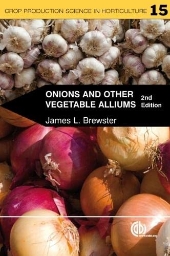
 11
11




 3
3




Blog: 5 Acres & A Dream
Books: Kikobian Books | Permies Digital Market
 3
3








Blog: 5 Acres & A Dream
Books: Kikobian Books | Permies Digital Market
 9
9




 5
5




 1
1




 1
1




Jan White wrote:...many desert plants can withstand quite cold temperatures as long as they're dry. Maybe the mulch was detrimental to the onions.
 3
3




Jan White wrote:I don't know anything about I'itois...
 2
2




Education: "the ardent search for truth and its unselfish transmission to youth and to all those learning to think rigorously, so as to act rightly and to serve humanity better." - John Paul II
 1
1




Education: "the ardent search for truth and its unselfish transmission to youth and to all those learning to think rigorously, so as to act rightly and to serve humanity better." - John Paul II
 1
1




Education: "the ardent search for truth and its unselfish transmission to youth and to all those learning to think rigorously, so as to act rightly and to serve humanity better." - John Paul II
 3
3




 3
3




 1
1




Education: "the ardent search for truth and its unselfish transmission to youth and to all those learning to think rigorously, so as to act rightly and to serve humanity better." - John Paul II
 1
1




 1
1




Thomas Dean wrote:I am also following up with a friend to get what might be some type of perennial onion... she has "green onions" in a patch that keeps coming back. She got the start from her mother-in-law (Vietnamese?) who has kept a patch for more than a decade. I'm wondering if they are some type of shallot?
 1
1




Education: "the ardent search for truth and its unselfish transmission to youth and to all those learning to think rigorously, so as to act rightly and to serve humanity better." - John Paul II




Thomas Dean wrote:I'm sort of kicking myself for ordering the onions sets that I did... before looking harder for a local source... but I guess that will give me more things to try.
 1
1




Cathy James wrote:
Also, it's not too late to dig up your bulbils, break them apart, and replant farther apart. Trust me, each one of those little bulbils will turn into a huge plant.
Education: "the ardent search for truth and its unselfish transmission to youth and to all those learning to think rigorously, so as to act rightly and to serve humanity better." - John Paul II




 3
3




 2
2








My alter ego who has a potty-mouth wrote a book. Check it out here: https://www.amazon.com/Adulting-101-your-straight-succeed/dp/1732148503/ref=sr_1_5?crid=3FBIUWQCJQAPM&keywords=adulting+101&qid=1675194062&sprefix=adulting+101%2Caps%2C96&sr=8-5
 1
1








Education: "the ardent search for truth and its unselfish transmission to youth and to all those learning to think rigorously, so as to act rightly and to serve humanity better." - John Paul II




Education: "the ardent search for truth and its unselfish transmission to youth and to all those learning to think rigorously, so as to act rightly and to serve humanity better." - John Paul II





|
money grubbing section goes here:
The new permaculture playing cards kickstarter is now live!
https://www.kickstarter.com/projects/paulwheaton/garden-cards
|






